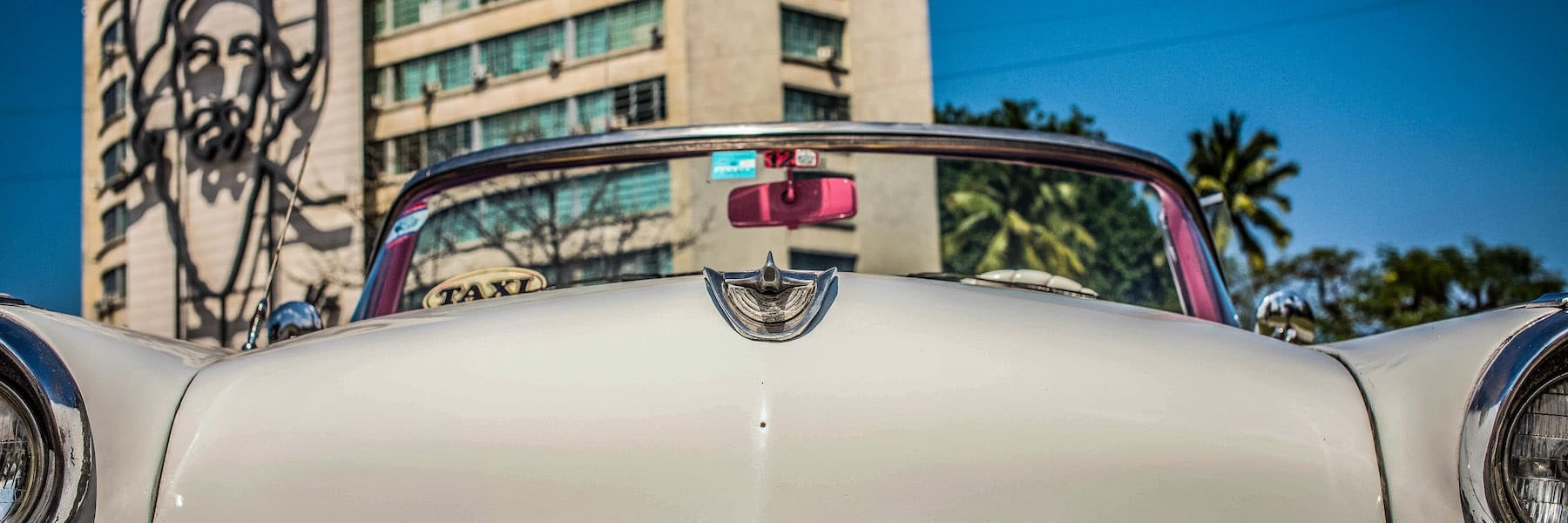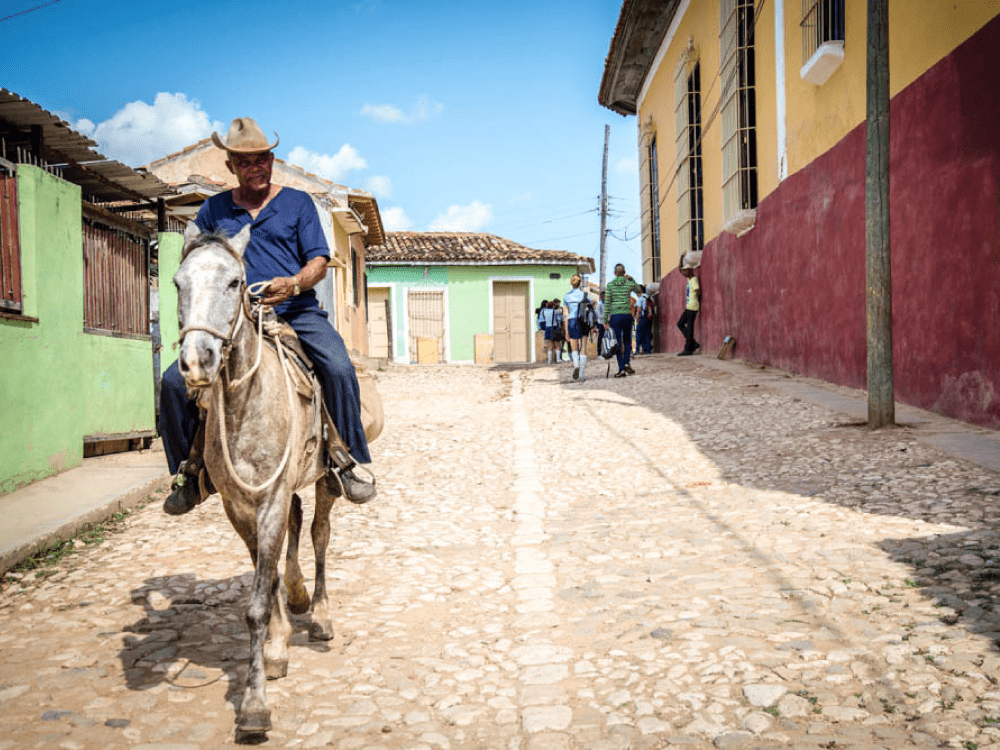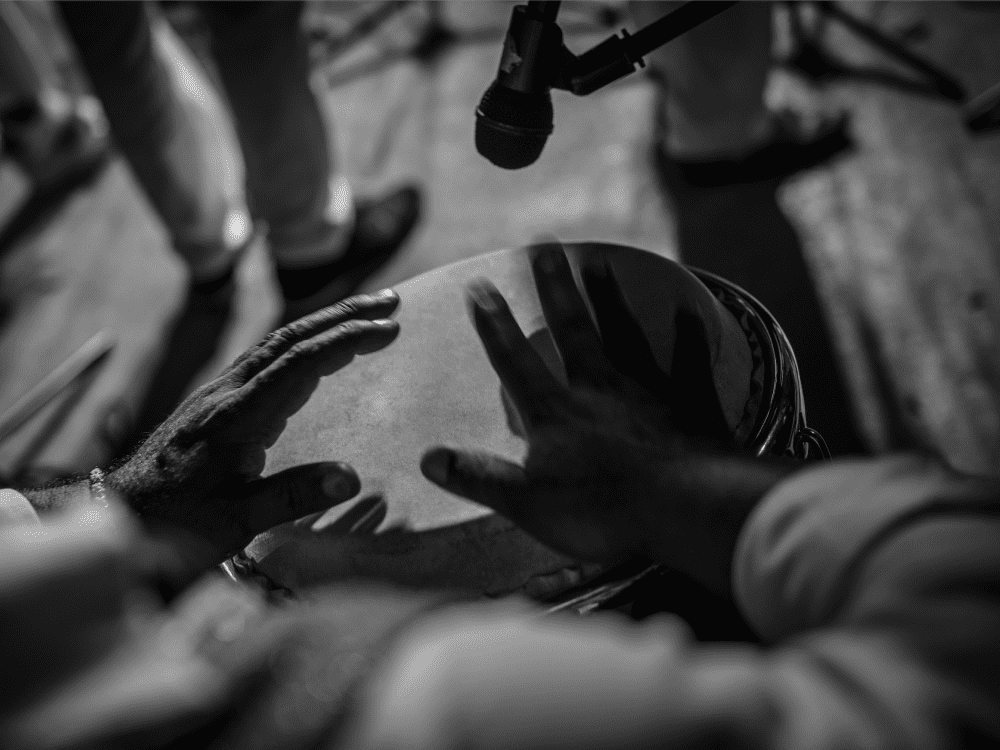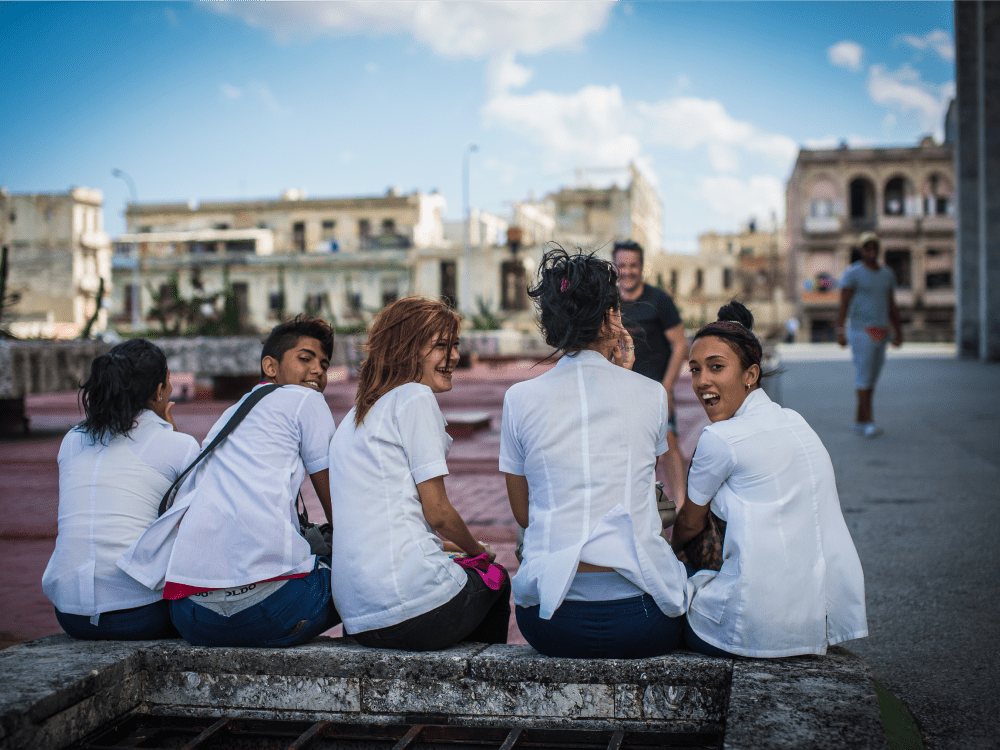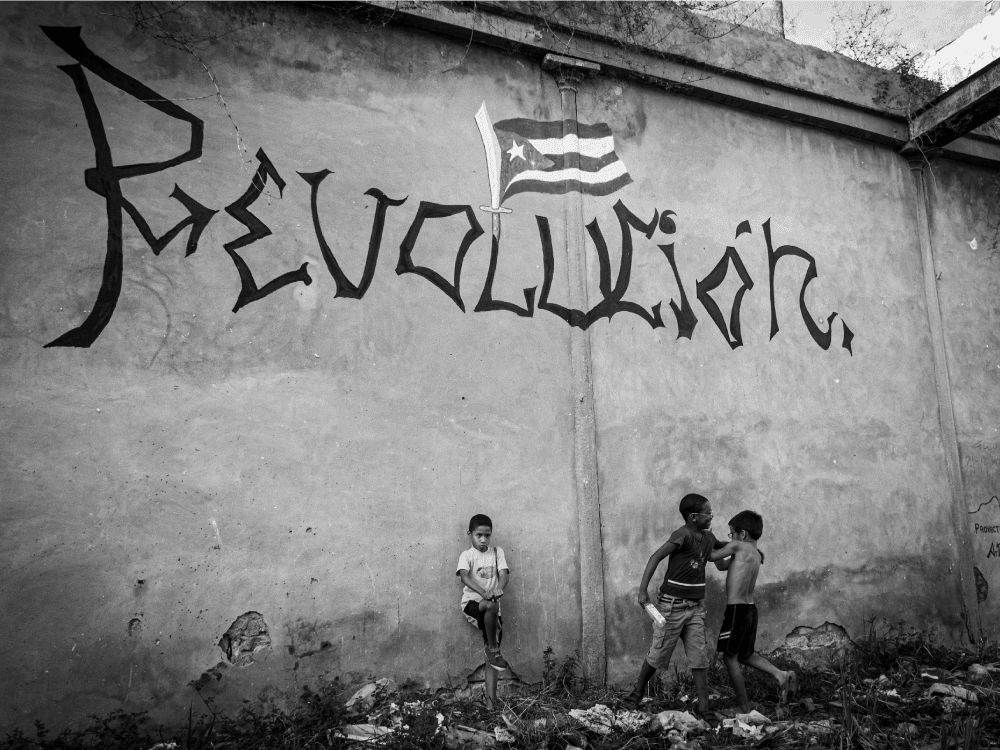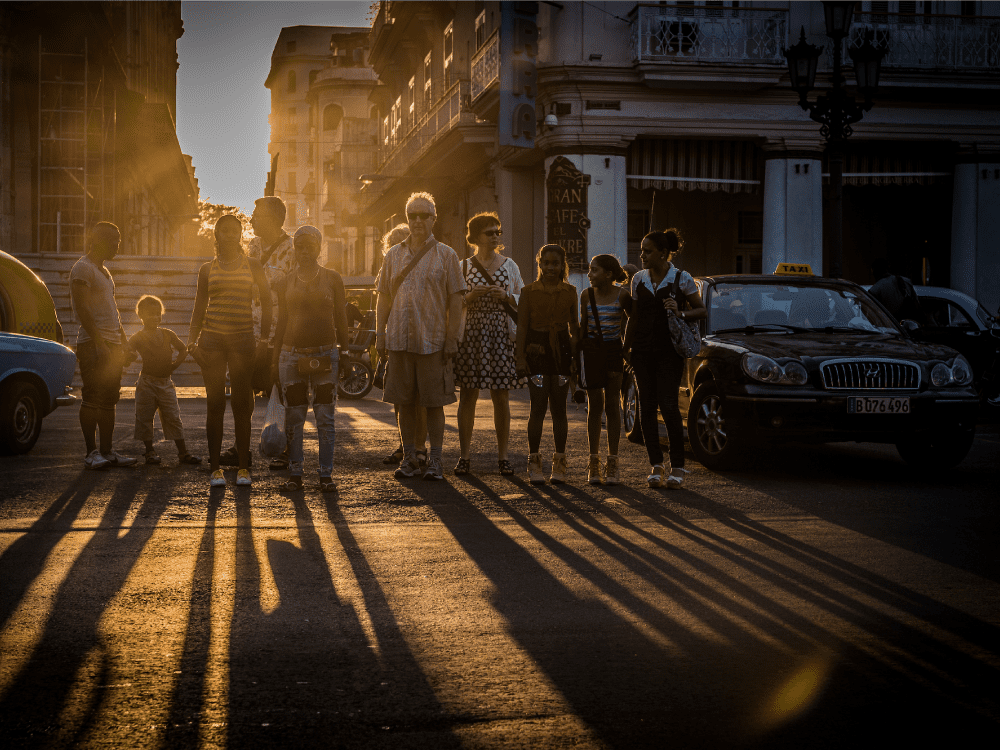COVID-19’s Impact on Cuba Through Photography
As the entire world is battling Covid-19, the response and experiences from different countries has been diverse and extreme. Cuba is a particularly interesting case study. Whilst the media portrays Cuba’s response to the pandemic in a relatively positive light, there are, of course, different sides of the story to be told. Photography is a wonderful way of telling these stories and exposing the truth of what life is like under COVID-19. In our brand new documentary photography trip, we invite aspiring photographers to embark on an eye-opening photojournalist assignment to Cuba, where they will document the lives of Cubans and share their remarkable experiences of living through the pandemic.
-Text by Lucy Davis, Images by Andrew Bell
Samba, salsa & so much more
A land where east meets west, culture bursts from every nook and cranny, and cigars and cha-cha-cha are standard breakfast accompaniments. Cuba: a country synonymous with tradition, vibrancy and charm. Fusing African and European heritage, this Caribbean island is the beating heart of what it means to be Latino.
With vintage cars, cheerful faces, and music and dancing spilling from every colourful street, it’s no surprise that Cuba is a sought-after destination for photographers. As soon as you step foot in Cuba, the spirit of the country is almost tangible, and the fuego (fire) and passion of the people contagious. Rhythm bleeds from the land and its inhabitants, and visitors are welcomed with open arms. However, underpinning Cuba’s zestful exterior is a fragmented history steeped in political instability, economic hardship and social disparity. Cubans are, by nature, tenacious and resilient people, and have proved they can face challenges with commendable determination.
How COVID-19 has affected Cuba
The response to COVID-19 in Cuba is somewhat a double-edged sword. Given its advanced medical research industry and impressive ratio of doctors per person in a country of highly educated citizens, Cuba’s healthcare system is recognised as one of the best in the world. If we take a look at the data, it’s evident that a clear and concise plan was put into place early on to halt the spread of the disease. The government initiated a rapid response by organising necessary provisions and arrangements before there were any reported cases of COVID back in January 2020. It quickly closed its doors to tourism the following March, and ordered lockdown for those in vulnerable groups. When compared with neighbouring countries, Cuba’s COVID numbers have remained relatively low, especially considering it has an ageing population – in fact, the oldest in the Americas.
On the flip side of this success, are gloomier truths and tales of day to day living for many Cubans. In most cases, there appears to be a common theme running through: differential access to services and a lack of resources. From accounts of empty shops, to starving citizens and never-ending queues for dwindling supplies, the reality behind Cuba’s resolute facade paints a very different picture than is brandished across news headlines.
Andrew Bell, one of the lead photographers on the trip, explains: “All [Cubans] tell the same story – shortages of food and other household essentials, long queues at all the stores, every day, restrictions on travel and interaction. All this at a time when the US embargo has been made even more rigid under the outgoing American government, preventing or adding difficulties for people in the US from sending things to their families in Cuba.” On top of this, the economy has taken a huge hit due to the pandemic. As the island is heavily fuelled and kept afloat by tourism, with no visitors for months on end, it begs us to ask the question: how is Cuba coping under the ‘new normal’?
Documentary photography; the goals of this trip
As this is a documentary photography trip, the first and foremost goal is to explore and uncover what is happening behind the scenes in Cuba. To do this, we must dig out stories from the streets, family homes and locally-run businesses, where the real blow of the pandemic has been felt most severely. As Bell points out, “This is a once in a lifetime event, which has had widespread and far-reaching impact across the world. It’s imperative that we as photographers and journalists document as much as possible and not just the wider impact or at a political level, but with ordinary people and individuals; who, after all, are those who have been affected the most.”
Why Cuba?
Of course, COVID-19 has reached all corners of the globe and has brought with it a whole host of trials and tribulations, but there’s something captivating about Cuba, which deems it particularly interesting for this photojournalism assignment. There’s no denying the country makes for great photography. Aside from the raw aesthetics it boasts, be it the alluring warmth and depth of light, the exciting palette of colours splashed across its varied architecture, or the wonderful contrasts from its land to seascapes, its real charm is the people. When describing Cubans, Bell comments, “Like the weather, they’re warm, friendly and welcoming… and also inquisitive; they love to stop, or be stopped, to talk and engage. Even when there’s a complete language barrier, you always find a way to communicate, and it’s that interaction which leads to some of the best images.” It’s this openness of the individuals in front of the lens, which drives and supplements evocative photography; Cuba, therefore, is the natural choice for this documentary photography trip.
What to expect as a documentary photographer
Over the course of fourteen days, selected participants will have the opportunity to work alongside two professional photographers, both with extensive camera experience in Cuba. Meeting and sharing stories with people from all walks of life within diverse Cuban communities, this documentary photography trip will offer aspiring photographers the chance to rouse their inner photojournalists and gain a wealth of expertise along the way. We begin the assignment in Havana, Cuba’s colourful, audacious and artistic capital, then slow down the pace in Viñales, a relaxed, authentic rural region, and finally round things up in the popular tourist spot, Trinidad, where a vibrant live music scene fuses with guajiros (country folk) and stunning natural attractions.
In each of these unique areas, the photographers will explore and unearth how the lives of Cubans have changed since the start of the pandemic. Capturing their unique stories and experiences respectfully and artistically, the photographers will document this monumental period in modern times, and leave their personal stamp on history in the making.
Naturally, no trip would be complete without some much deserved down-time. Between shoots, there will be ample opportunities to relax and unwind, and to delve into Cuba’s irresistible, vibrant culture. From joining a hot and spicy salsa class, to getting lost in the countless art galleries, there is always something to get the senses tingling in Cuba! The photographers will be invited to sample traditional Cuban cuisine at some of the best spots in town, and of course, wet the whistle with a few glasses of authentic Cuban ron (rum)!
Who can join this trip?
The trip is open to anyone with an interest in photography (and Cuba!), but we expect it to appeal more to those wanting to try their hand at editorial and documentary photography, specifically. Whilst the lead photographers on the assignment won’t be offering formal photography tuition during the trip, they will do everything they can to assist the participants and ensure they capture their best possible images. For this reason, it would be preferable if the participants had a reasonable understanding of basic photographic techniques and principles, and are comfortable handling their camera and equipment.
How to apply
Simply head on over to the ‘Enquire’ section, which is listed at the bottom of the trip page, and send us a message to express your interest. We can’t wait to hear from you!
¡Vamos a Cuba! ¡Viva Cuba!

